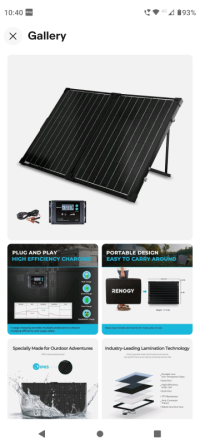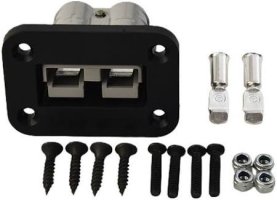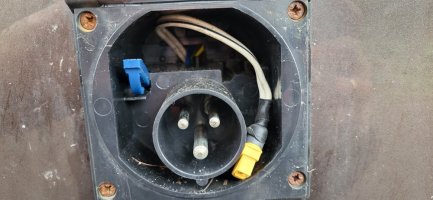Irmscher2007
Member
Hello. New member, what a great forum
I'm after some advice and pointers if anyone can chip in.
The van was converted about 8 years ago.
It has an electric hookup up, PMS3, leisure battery (nothing fancy)
It runs a domestic chest fridge, LED spots, a few plugs and has the 12v cigarette charger type connector in the middle of the plugs.
Most of the time we are on hookup so can use all the electrics.
I am doing the annual trip to Le Man's 24 hours motor race in June. Usually we have a hookup as we get there early and can power all the van, and external fridge in the van, a Vango cook grill etc using a splitter.
Unfortunately the site we are on this year has no electric so will have to run off the leisure battery. I cannot see the battery being able to run for 6 nights powering the fridge, charging phones and speakers.
Solar wise, to keep the leisure battery topped up I was looking into purchasing a portable foldout Renology solar kit.
I have spotted the one below on eBay for £80.
Would this do the job to keep the battery topped up? It has a controller built in on the back of the panel so is it as simple as connecting the wiring to battery terminals?
Which blue tooth device would be good to monitor the solar power being produced? Thanks

I'm after some advice and pointers if anyone can chip in.
The van was converted about 8 years ago.
It has an electric hookup up, PMS3, leisure battery (nothing fancy)
It runs a domestic chest fridge, LED spots, a few plugs and has the 12v cigarette charger type connector in the middle of the plugs.
Most of the time we are on hookup so can use all the electrics.
I am doing the annual trip to Le Man's 24 hours motor race in June. Usually we have a hookup as we get there early and can power all the van, and external fridge in the van, a Vango cook grill etc using a splitter.
Unfortunately the site we are on this year has no electric so will have to run off the leisure battery. I cannot see the battery being able to run for 6 nights powering the fridge, charging phones and speakers.
Solar wise, to keep the leisure battery topped up I was looking into purchasing a portable foldout Renology solar kit.
I have spotted the one below on eBay for £80.
Would this do the job to keep the battery topped up? It has a controller built in on the back of the panel so is it as simple as connecting the wiring to battery terminals?
Which blue tooth device would be good to monitor the solar power being produced? Thanks







